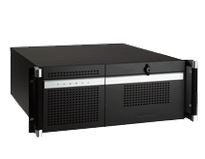A lot of us have been there before. You have application critical software that must successfully operate 24/7 and the Industrial PC running it has just died. You troubleshoot the power supply, CPU, RAM, Motherboard, Single Board Computer (SBC), Passive Backplane, Hard Drive and cabling to see where the failure has occurred. If you do find the issue, you now have to procure a part to replace it, which isn’t as easy as it sounds.
Most Industrial PCs are designed to last at least 10 years. During that lifetime, manufacturers discontinue CPUs, memory and the boards that use them for newer technology that ties in with current operating systems and software. The tough part is that your software has specification requirements that must be adhered to in order for it to successfully operate. Due to these factors, finding replacement parts is a tough gig.
Here are five things to consider when deciding if it’s time to upgrade your PC.
1. Do you have access to a copy of the software you are currently using?
- It is important to have access to a copy of your software in case you can’t access the hard drive on your failed PC. This will enable you to install the software on your replacement PC. If this has been developed in-house, this should be easy to find.
- There are also situations where an integrator implemented the software and you don’t have access to a copy. You will need to work with them to obtain a copy so that it can be reinstalled on the newer platform.
2. What operating system does your platform require?
- You will want to find out what the specification requirements are for the software you are running. This will tell you what operating system the software will run on.
- If the software only supports an operating system older than XP Pro SP3, you will want to find an updated version that supports XP Pro SP3 or Windows 7 Pro.
- In some situations you may have to redevelop your software to work with one of the current operating systems. This won’t be as much of an issue if it was developed utilizing CE, Linux or DOS, but if CE was used you will have to develop a new image that takes into account all of the updated drivers the PC will contain for the motherboard/SBC, LAN, Video, etc.
3. What type of processor does your platform require?
- It is vital to see what your software requires for a processor. Some software is old enough where the processor supported was a PIII or P4 CPU. Current processors are LGA775 P4 and Core 2 Duo, Atom, AMD and Core i3/i5/i7. If your software supports these, that’s great! If not, it will be important to update your software via programming or procurement of an updated licensed version that will support these CPUs.
4. What type and amount of memory does your platform require?
- Memory has constantly changed from DDR to DDR2 and DDR3 and will continue to do so as technology evolves. You will want to check your software requirements to make sure they are in line with the memory available for your new system configuration. If your software only supports older memory, you will need to update it or obtain an updated version that will work with your new platform.
5. What I/O does your platform require?
- In many instances, your Industrial PC will include I/O cards that are essential to your application. It is important to make sure that they are supported by the new PC you purchase.
- If you have legacy ISA cards, you will need to purchase a PICMG 1.0 platform that supports ISA and PCI cards. If you have newer PCIe cards, you will want to select a PICMG1.3 platform that supports those cards.
- In the case that you have PCI-X cards, there are a few platforms still available but I encourage you to contact someone like myself before taking the dive into selecting the appropriate PC.
If you adhere to the five areas listed above, you will ensure that your software successfully operates with your new Industrial PC.
